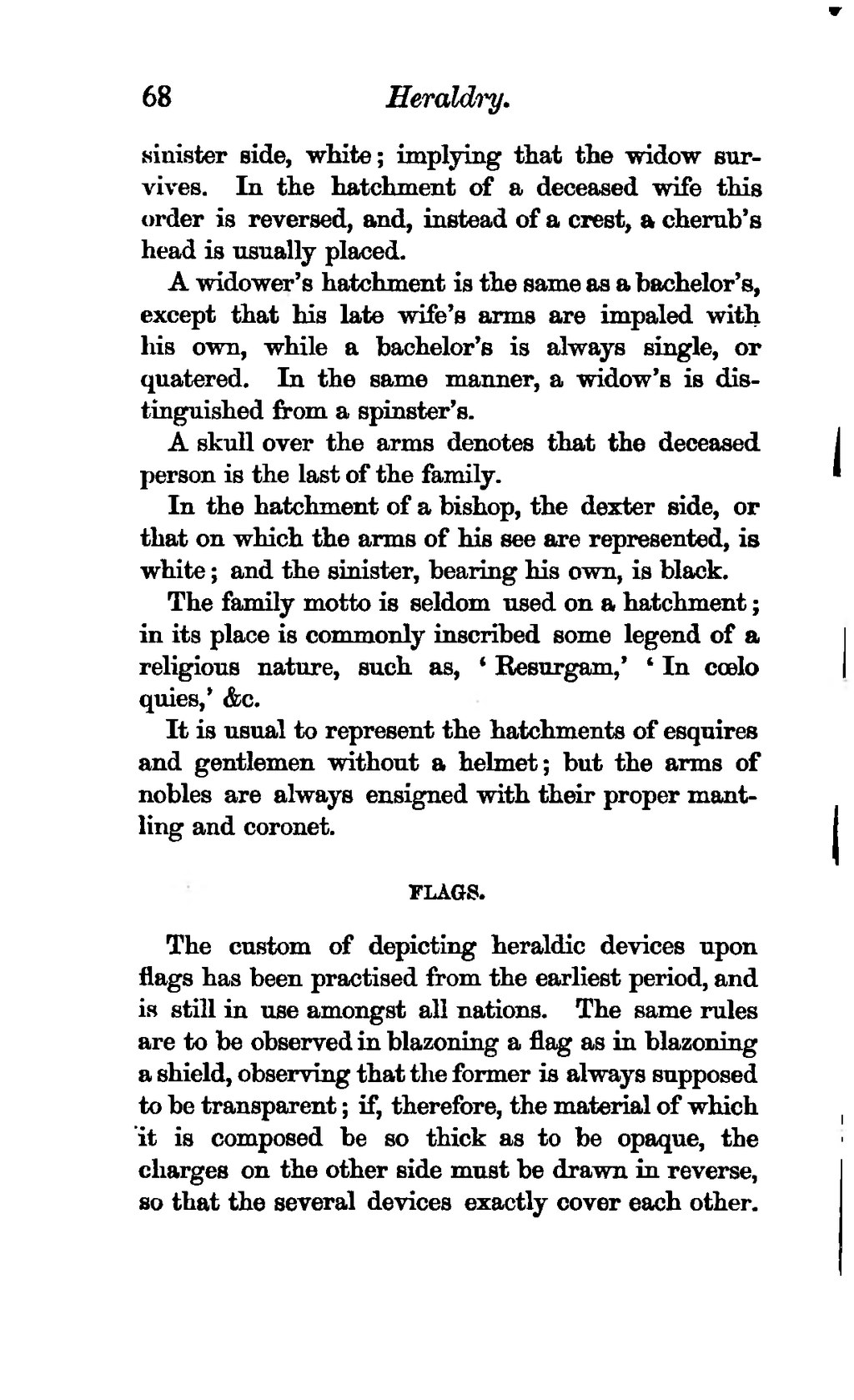sinister side, white; implying that the widow survives. In the hatchment of a deceased wife this order is reversed, and, instead of a crest, a cherub’s head is usually placed.
A widower’s hatchment is the same as a bachelor’s, except that his late wife’s arms are impaled with his own, while a bachelor’s is always single, or quatered. In the same manner, a widow’s is distinguished from a spinster’s.
A skull over the arms denotes that the deceased person is the last of the family.
In the hatchment of a bishop, the dexter side, or that on which the arms of his see are represented, is white; and the sinister, bearing his own, is black.
The family motto is seldom used on a hatchment; in its place is commonly inscribed some legend of a religious nature, such as, ‘Resurgam,’ ‘In cœlo quies,’ &c.
It is usual to represent the hatchments of esquires and gentlemen without a helmet; but the arms of nobles are always ensigned with their proper mantling and coronet.
FLAGS.
The custom of depicting heraldic devices upon flags has been practised from the earliest period, and is still in use amongst all nations. The same rules are to be observed in blazoning a flag as in blazoning a shield, observing that the former is always supposed to be transparent; if, therefore, the material of which it is composed be so thick as to be opaque, the charges on the other side must be drawn in reverse, so that the several devices exactly cover each other.
